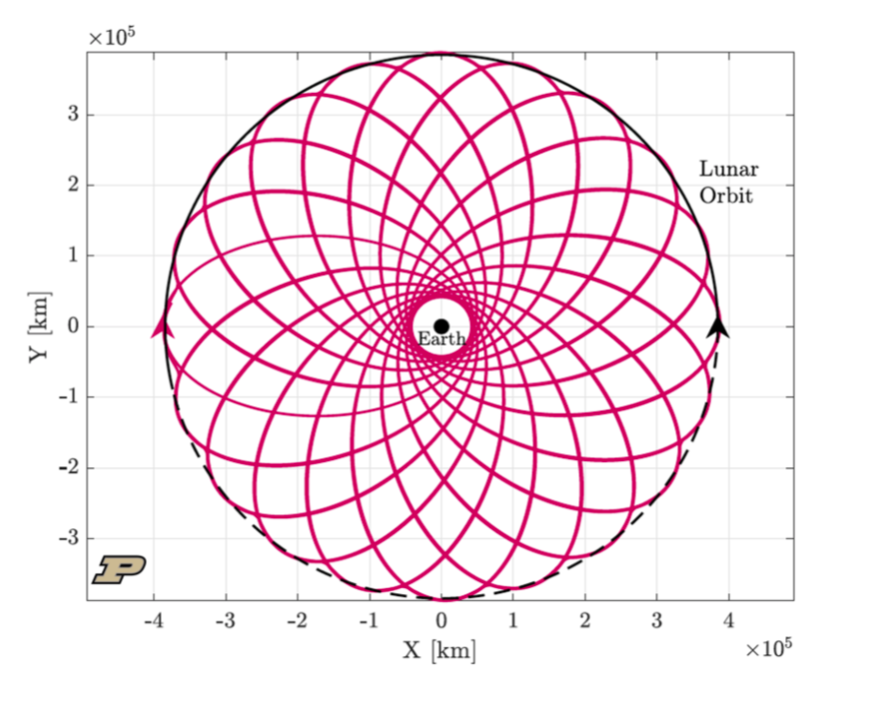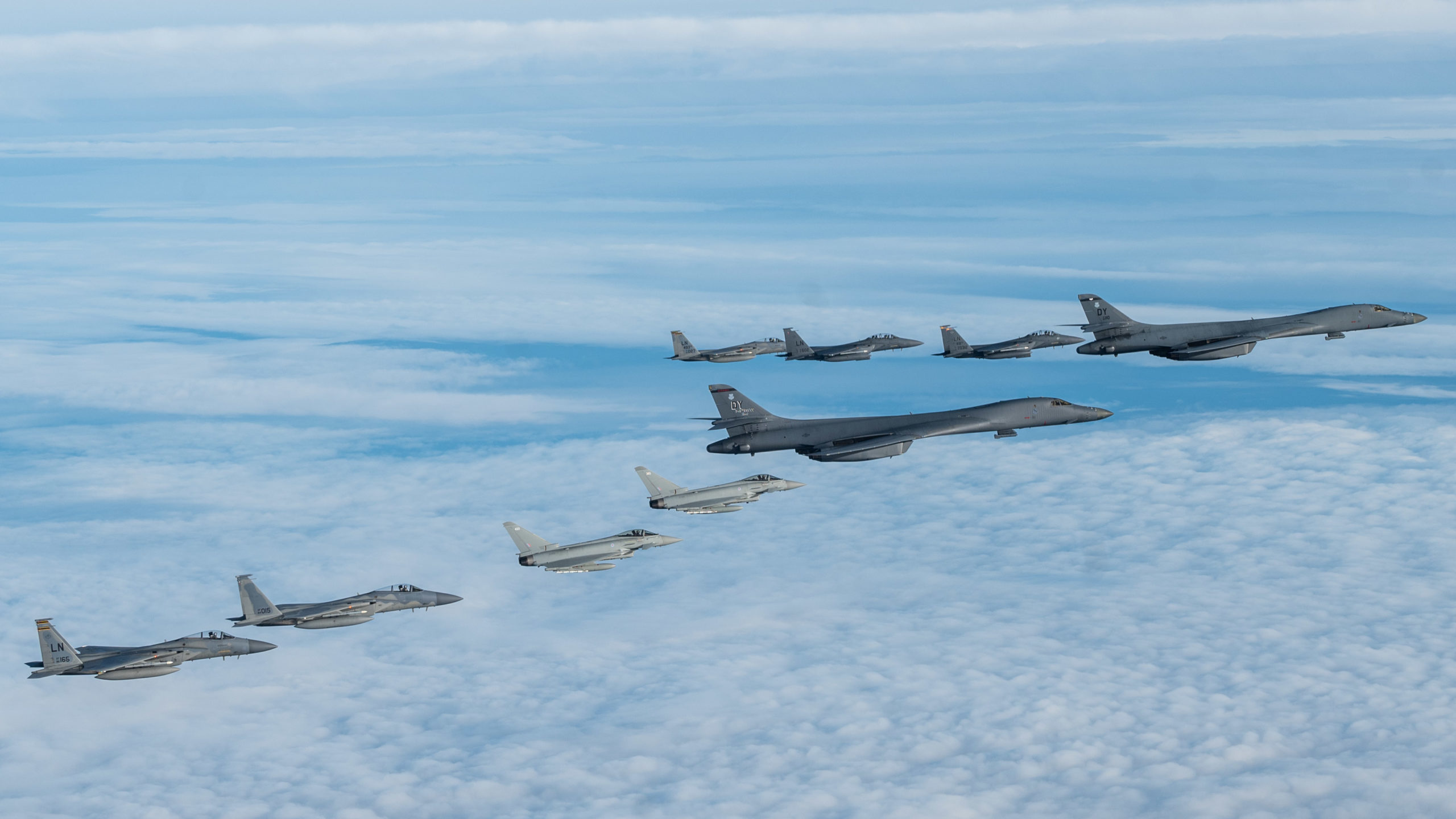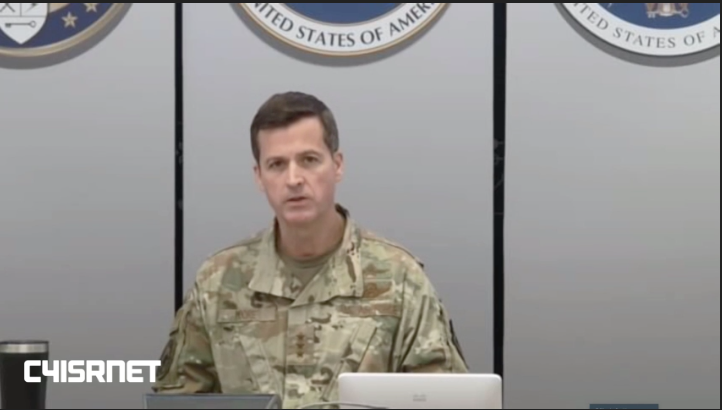A startup figuring out how to surveil the cislunar domain thinks a swarm of self-guiding cubesats could cover it, each revisiting the moon every 26 days. Unlike spacecraft in deep space now, its cubesats would maintain “radio silence.”
The physicist-run startup Rhea Space Activity announced an unspecified amount of funding from SpaceFund in November to advance this idea, as well as a one-year small business grant from the Air Force worth $697,000 in March. The Space Force is the end user.
The ability to field such a constellation would build on the success of two projects.
First, the company’s spacecraft navigation module—the Jervis Autonomous Module, or JAM—is set to go into service in its “first instance” in 2022 or 2023, the company said in emailed responses to questions by Air Force Magazine. It’s named for the founder of the first government intelligence agency, according to a statement announcing the SpaceFund investment, and brings together flight-proven software and hardware from past missions to create the new capability.
The 10 centimeter, or 1u, cubesat module will determine its position based on the likes of stars, asteroids, other cislunar spacecraft, and features on the surface of the moon—then navigate autonomously. This would get around the need for two-way radio ranging with Earth ground stations to navigate—amounting to the “radio silence” the company alludes to. Company founder and astrophysicist Shawn M. Usman, whose background is in intelligence, roughly estimates the cost of two-way ranging via NASA’s Deep Space Network, which is “very overtasked right now,” in the $500,000 range.
The JAM design “will significantly decrease” the cost, number of people, and extent of communications involved in maneuvering in cislunar space “and, over time, will provide a fundamentally different way to control all manner of spacecraft,” according to the statement.
Then, in 2024, the company plans to launch a cubesat, Jervis-1, into a resonant orbit—a type of orbit that will “leverage this gravitational environment” of the three celestial bodies, Cameo Lance, the company’s director of physics programs, told Air Force Magazine. The company has devised the orbit’s trajectory specifically for the Space Force.
A derivative of “geospatial intelligence,” the company’s concept of “lunaspatial intelligence,” or LUNINT, involves monitoring human activity on and around the moon. In one scenario, a constellation of an undisclosed number of Jervis-type cubesats could surveil all of cislunar space, looking for other satellites. Jervis-1 will have an electric propulsion system for station-keeping maneuvers “and to deviate from the trajectory if needed,” according to the company.
The company also hopes to identify additional “very specific” trajectories for the Space Force in cislunar space, also requiring “very low propellant” to maintain, Usman said. Data transfers could take place at any point during the missions.
Space domain awareness is U.S. Space Command’s initial priority in cislunar space. The command, which stood up as the Defense Department’s 11th combatant command in 2019, defines space domain awareness as an extension of the established disciple of space situational awareness, said its commander, Army Gen. James H. Dickinson, in a briefing with reporters in August. Whereas space situational awareness “is reporting on where something is in space,” Dickinson said, space domain awareness also tries to understand “the ‘why’—the intent—behind having something in space and where it is.”
The command’s deputy commander, Space Force Lt. Gen. John E. Shaw, mused in a speech that navigating the cislunar environment might call for all-new ways of thinking about space and floated ideas such as the concepts of maneuvering “upwell” and “downwell” through the cislunar gravity wells created by the Earth, moon, and sun.
NASA, meanwhile, is testing a lunar navigation system as part of its CAPSTONE mission that’s also trailblazing the orbit of the agency’s planned lunar space station, Gateway, in a scheme that would trade two-way ranging with Earth for a method that swaps signals between satellites instead.
Rhea Space Activity told Air Force Magazine, “We anticipate using [radio frequency] technology on Jervis-1 to surveil the cislunar environment. However, there are a variety of other [intelligence, surveillance, and reconnaissance] technologies we are investigating that could also prove useful in surveilling the same cislunar environment.” Company officials did not elaborate on what those might be.








